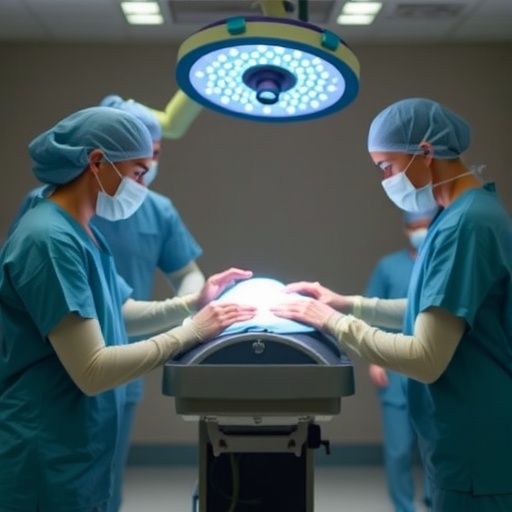Credit: UC San Diego Health
A team of 18 University of California San Diego School of Medicine and Moores Cancer Center researchers has developed a new tool to analyze an often overlooked aspect of cancer genetics — an alteration that results in the loss or gain in a copy of a gene. This change, known as somatic copy-number alterations, may be key to disease progression and might offer new therapeutic approaches for ovarian cancer and other malignancies.
"When most people think about cancer genetics, they think about single key mutations that foster tumor formation — very specific things like the BRCA genes," said Joe R. Delaney, PhD, a fellow in the Clinical Translation program at UC San Diego Moores Cancer Center and lead author of the paper published February 15 in Nature Communications. "These changes are often referred to as tumor drivers but these are not the only deviations that impact cancer growth. We explored other possibilities."
More than 90 percent of genetic changes in cancer cells involve the loss or gain of a single copy of a gene, rather than a mutation. A tumor cell might have one copy or three instead of the normal two copies — one provided by each parent. This area has not been explored in depth, since experience with other diseases has taught scientists that the loss of one gene copy might not lead to disease symptoms because the second copy provided by the other parent fills in.
Delaney and team wondered if this were true if several single gene copies that cooperated for the same cellular function were lost, and what the patterns might be in different cancers. The team designed the Haploinsufficient/Triplosensitive Gene (HAPTRIG) computational tool to identify pathways significantly disrupted by the loss and gain of genes.
Ovarian cancer in particular is fraught with these alterations — with more than 60 percent of genes affected. When the team analyzed this malignancy using HAPTRIG, the pathway that stood out was autophagy — a natural process of cell death that helps maintain normal cellular health. Ovarian cancer cells use autophagy all of the time, but also lose several copies of autophagy genes resulting in a compromised capacity.
The researchers then used a combination of existing United States Food and Drug Administration-approved drugs to target autophagy and found ovarian cancer cells to be highly sensitive to these drugs in several different mouse cancer models — even among cells resistant to standard chemotherapy. The combination of drugs appeared less toxic than standard chemotherapy, were relatively inexpensive and should be clinically evaluated, said Dwayne G. Stupack, PhD, the study's senior author and associate professor in the dDivision of Gynecologic Oncology at Moores Cancer Center.
With further work, said the authors, this finding could lead to new approaches to treat chemotherapy-resistant disease, and could enhance treatment of other cancers as well.
"Our study suggests that a roadmap of targetable genetic changes in tumors should not be limited to mutations," said Stupack. "HAPTRIG may reveal additional targetable pathways across cancer types. We have provided a free web-tool to allow the community to easily perform a HAPTRIG analysis on 21 cancer types."
###
Study co-authors include: Chandni B. Patel, Katelyn McCabe Willis, Mina Haghighiabyaneh, Joshua Axelrod, Isabelle Tancioni, Dan Lu, Jaidev Bapat, Shanique Young, Octavia Cadassou, Alena Bartakova, Parthiv Sheth, Carley Haft, Sandra Hui, Cheryl Saenz, David D. Schlaepfer, and Olivier Harismendy, UC San Diego
Media Contact
Yadira Galindo
[email protected]
858-249-0456
@UCSanDiego
http://www.ucsd.edu
############
Story Source: Materials provided by Scienmag




